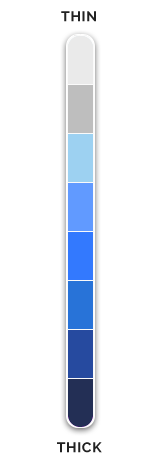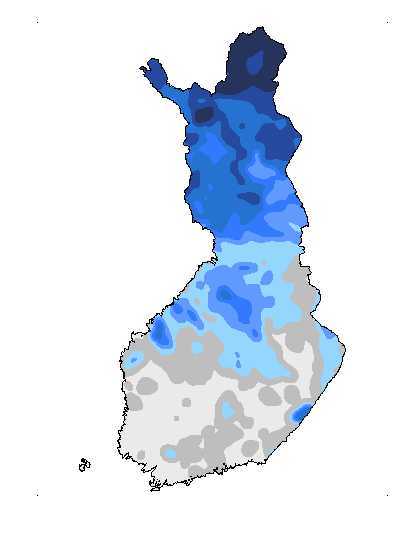Water situation snapshots
Select snapshot
Soil frost situation 30.4.2025
Soil frost only in Lapland
The depth of soil frost in the northern parts of the country is 30–150 cm. The greatest amount of soil frost is found in Angeli, Inari, where the frost reaches a depth of 155 cm. Soil frost has mainly melted in other parts of the country, but in some places, it still occurs at the depth of 0–10 cm.

What is soil frost?
Soil frost occurs when water present in between soil particles freezes. Ice binds these particles together and makes the ground go hard. The effects of soil frost depend on the soil type.
How is soil frost formed?
Frost starts forming when soil temperature drops below freezing. It begins close by the ground surface and penetrates deeper and deeper. Frost depth is affected by the severity of the winter and thickness of snow cover and, among other things, the soil type. A period of at least a week or two of very cold temperatures is needed in order for the soil to freeze to a depth of 10 to 20 centimetres. Snow acts as an efficient insulation: it only takes a snow layer of 10 to 15 centimetres to stop the soil from freezing.
Where does soil frost occur?
The frost depth and duration vary by region: in Eastern Finland, where the snow cover is usually thick, soil frost only reaches to a depth of 10 to 20 centimetres, whereas in Western Finland the frost depth is usually greater. In Northern Lapland the frost depth can reach one metre and sometimes even more. The frozen soil layer typically is at its thickest in late February or early March, or slightly later in Lapland, however with major yearly variations. Climate change is reducing soil frost.
Many types of soil frost
The characteristics of soil frost are influenced by the soil type. In soil with a crumby structure water freezes on cavity walls, creating cavity frost with rod-like crystals. Massive frost develops in soil with a more compact structure, into which capillary action continuously pulls more water. The increased water volume and freezing expand the volume of the soil, resulting in frost heave. When soil frost melts, puddling may occur. The third type is layered soil frost.


 Send your observations
Send your observations
